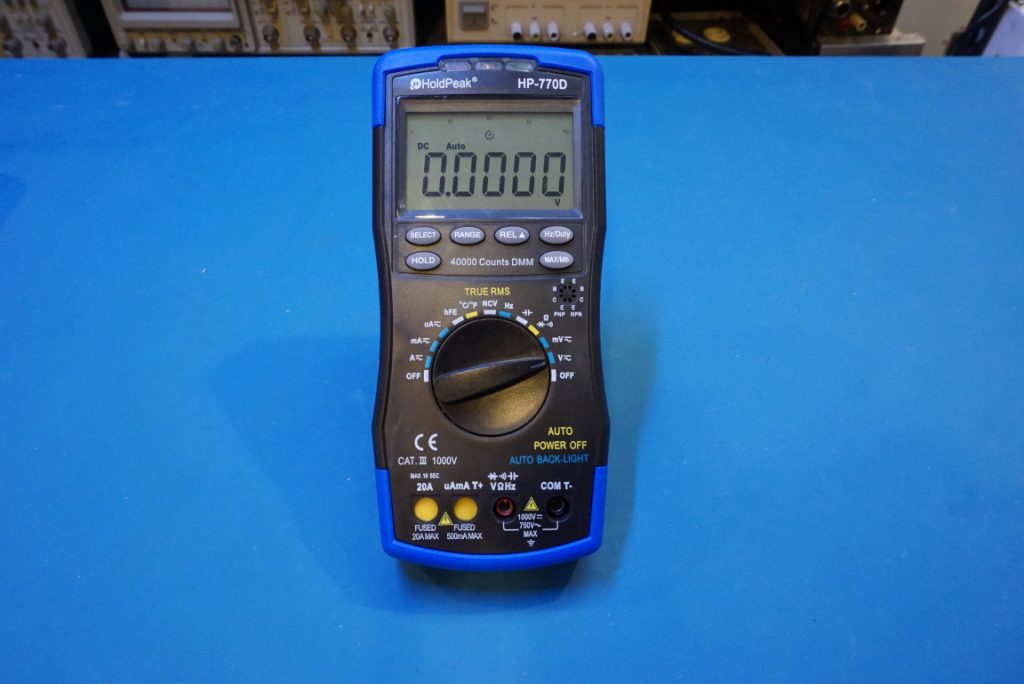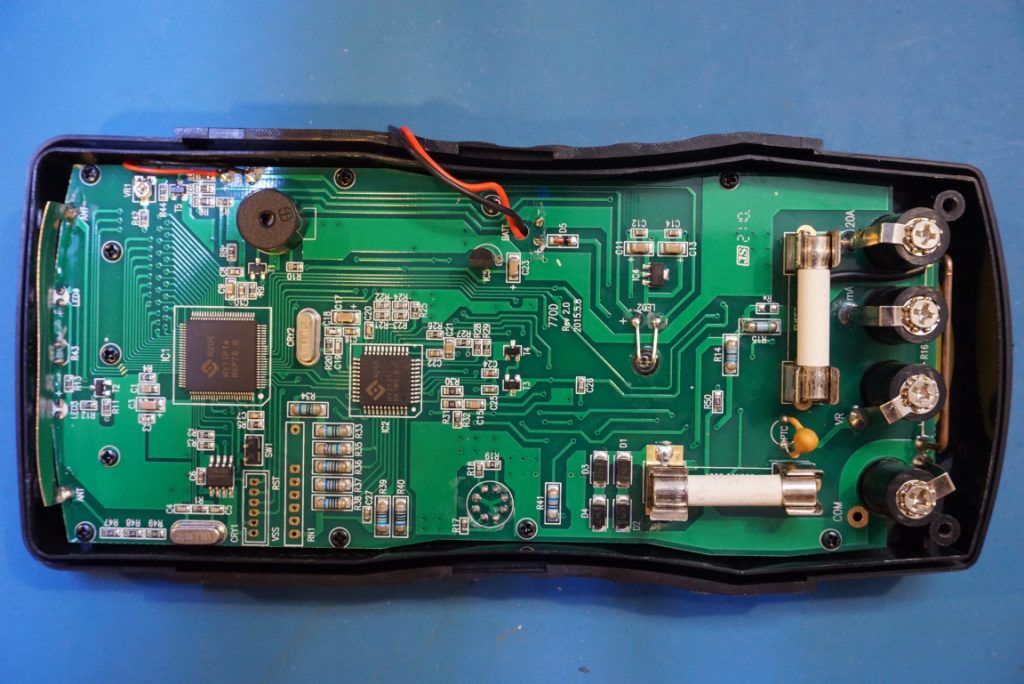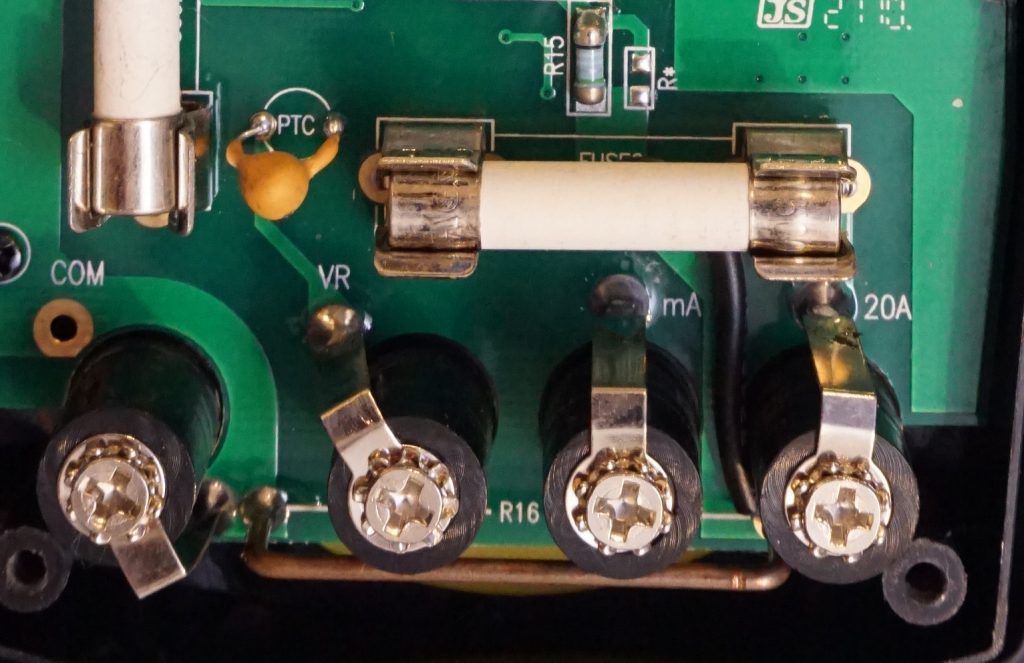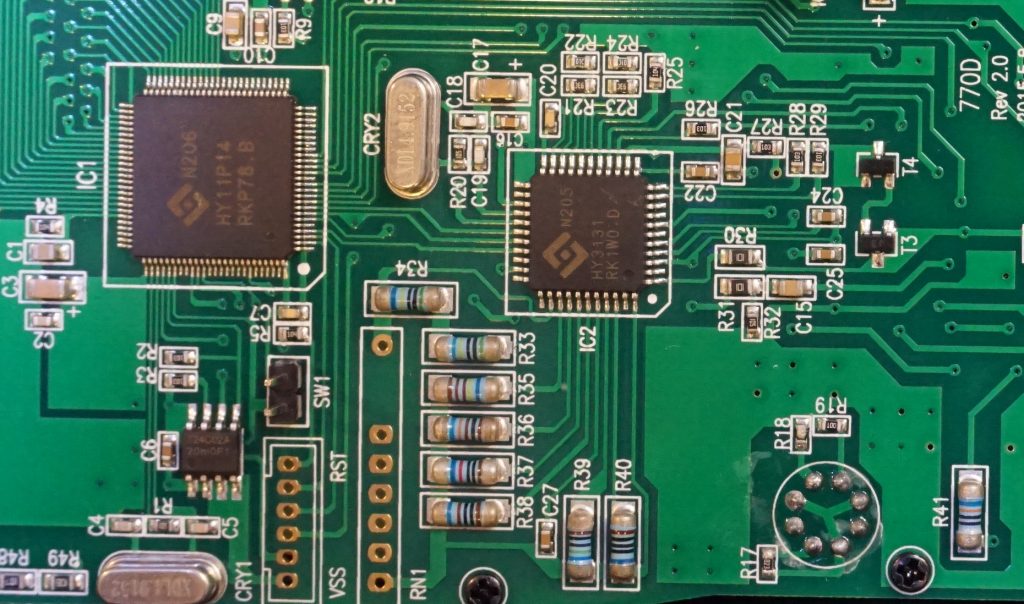HoldPeak’s HP-770D is a 40,000 counts true RMS multimeter. Price and size-wise it is very similar to UNI-T’s new UT61E+ I reviewed a while ago. Although HoldPeak is not as well known as UNI-T, this meter does offer some advantages compared to the UT61E+ in some areas besides its higher counts (40,000 versus 22,000 for UT61E+).
In its 40mV range (for both AC and DC) for instance, it can measure with a resolution of 1μV, whereas UT61E+ only has a resolution of 10μV. For some electronics hobbyists, especially for those who do low level measurements routinely, this is a welcome feature and seldomly found on meters of this price range.
One feature I like a lot about this feature is its interlocked input design. A “shutter” mechanically blocks the jacks that are not allowed by the range currently dialed in. In my opinion, this design is superior than other designs (e.g. visual/audible warnings) that I have seen. Another feature that is unique to this meter is its automatic back light. There is a CdS photo sensor that detects the ambient light, when the environment gets dark the back light would turn on automatically.
The absolute accuracy of this meter is not as tight as that of the UT61E+ however, but it’s nevertheless adequate. Interestingly though, the product page does not give any detailed specifications. The specifications listed below are copied from the manual for your reference:
DC Voltage
| Range | Resolution | Accuracy |
| 40 mV | 1 μV | ±(0.5% of rdg + 5 digits) |
| 400 mV | 10 μV | ±(0.1% of rdg + 2 digits) |
| 4 V | 100 μV | |
| 40 V | 1 mV | |
| 400 V | 10 mV | |
| 1000 V | 100 mV | ±(0.1% or rdg + 5 digits) |
AC Voltage (True RMS)
| Range | Resolution | Accuracy |
| 40 mV | 1 μV | ±(1.0% of rdg + 10 digits) |
| 400 mV | 10 μV | ±(0.8% of rdg + 10 digits) |
| 4 V | 100 μV | |
| 40 V | 1 mV | |
| 400 V | 10 mV | |
| 750 V | 100 mV | ±(1.2% of rdg + 10 digits) |
Impedance: 10MΩ, >100MΩ on 40mV/400mV range
Overload protection: 1000V DC or 750V AC rms
DC Current
| Range | Resolution | Accuracy |
| 400 μA | 0.01 μA | ±(1.0% of rdg + 10 digits) |
| 4000 μA | 0.1 μA | |
| 40 mA | 1 μA | |
| 400 mA | 10 μA | |
| 4 A | 100 μA | ±(1.2% of rdg + 10 digits) |
| 20 A | 1 mA |
AC Current (True RMS)
| Range | Resolution | Accuracy |
| 400 μA | 0.01 μA | ±(1.2% of rdg + 10 digits) |
| 4000 μA | 0.1 μA | |
| 40 mA | 1 μA | |
| 400 mA | 10 μA | |
| 4 A | 100 μA | ±(1.5% of rdg + 10 digits) |
| 20 A | 1 mA |
Overload protection: 500mA/500V fast-blown fuse, 20A/500V fast-blown fuse, 20A up to 15 seconds
Frequency range: 40 to 1 kHz
Resistance
| Range | Resolution | Accuracy |
| 400 Ω | 0.01 Ω | ±(1.0% of rdg + 10 digits) |
| 4 kΩ | 0.1 Ω | ±(0.5% of rdg + 10 digits) |
| 40 kΩ | 1 Ω | |
| 400 kΩ | 10 Ω | |
| 4 MΩ | 100 Ω | |
| 40 MΩ | 1 kΩ | ±(1.0% of rdg + 10 digits) |
Overload Protection: 500V DC or AC rms
Capacitance
| Range | Resolution | Accuracy |
| 99.99 nF | 10 pF | ±(3.0% of rdg + 10 digits) |
| 999.9 nF | 100 pF | ±(2.5% of rdg + 5 digits) |
| 9.999 μF | 1 nF | |
| 99.99 μF | 10 nF | ±(5.0% of rdg + 10 digits) |
| 999.9 μF | 100 nF | ±(10.0% of rdg + 20 digits) |
| 9.999 mF | 1 μF | |
| 99.99 mF | 10 μF |
Overload Protection: 500V DC or AC rms
Frequency
| Range | Resolution | Accuracy |
| 9.999 Hz | 0.001 Hz | ±(0.1% of rdg + 5 digits) |
| 99.99 Hz | 0.01 Hz | |
| 999.9 Hz | 0.1 Hz | |
| 9.999 kHz | 1 Hz | |
| 99.99 kHz | 10 Hz | |
| 999.9 kHz | 100 Hz | |
| 9.999 MHz | 1 kHz |
Sensitivity: sine wave 0.6V rms (9.999MHz: 1.5V rms)
Overload Protection: 500V DC or AC rms
One drawback of this meter is the resolution in its lowest capacitance measurement range (99.99nF). In this range, it unfortunately only has a resolution of 10 pF, instead of the 1 pF commonly found on other meters in similar class. The temperature measurement range has a 0.1 degree resolution, which is better than most meters I have seen. Also to note is that although not specified, the display update rate is adequate in most ranges.
The meter operates on a 9V battery. The current consumption is at around 5mA depending on the range (with the back light off), which is quite decent. The meter utilizes a Holtek HT7530-1 3V low dropout linear regulator for the regulated voltage. This means that the meter can technically function with the supply voltage all the way down to just above 3V. Although the low battery indicator would come on when the supply voltage drops below 8.5V.
Another disappointment is the lack of adequate input protection. Besides a lone PTC, there is no MOVs to be seen. Since there is no MOVs to absorb any transient it is highly doubtful that this meter meets the CAT III rating that is stamped on the case.
Here is a close up of the circuit board. A Hycon technology’s HY11P14 mixed signal microcontroller is used to drive the LCD. The chip also has a built in 18-bit ADC. The main DMM chip used is an HY3131. It’s a 50,000 count DMM chip and has a 24-bit ADC built in. There is a 2K 2402A EEPROM on the circuit board, it is presumably used to store calibration and/or configuration data. A jumper labeled SW1 can also be seen below, I think it might be used to enable calibration.
You can find the detailed review video below:





